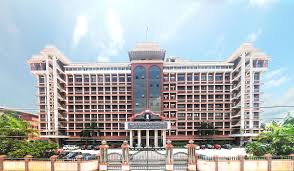Understanding the High Court of Kerala and Its Recent Decisions

Introduction
The High Court of Kerala plays a vital role in the Indian judicial system, serving as the highest court in the state of Kerala. Established in 1957, it has been instrumental in upholding the rights and liberties of the citizens of Kerala while interpreting and enforcing the Constitution of India. The recent decisions by the High Court have sparked discussions around their implications on governance, societal norms, and public policies, making it a topic of significant relevance.
Recent Developments
In the past month, the High Court of Kerala has delivered several landmark judgments touching various facets of law and civic rights. Notably, one of the prominent cases involved a challenge to the Kerala government’s ban on activities in certain peaceful gatherings. The court ruled in favor of the right to assembly, emphasizing the constitutional mandate that citizens have the right to peacefully protest.
Another significant ruling addressed the issue of online classes in the wake of the persistent pandemic impacts. The High Court ordered the state government to ensure that technologically challenged students have access to learning resources equal to their peers, upholding the principle of equality in education.
Furthermore, the court has been actively involved in environmental conservation issues. Recently, it directed authorities to establish strict regulations against illegal sand mining along riverbanks to protect the ecology and local communities.
Public Reaction and Implications
The judgments from the High Court of Kerala have generally been met with a positive response from the public, particularly among civil society groups and activists who advocate for rights and sustainable development. The emphasis placed on individual rights and environmental sustainability aligns with growing public sentiment demanding accountability from the government.
Legal experts suggest that the High Court’s proactive stance may lead to a more engaged judiciary across other Indian states. As these recent rulings start to resonate beyond Kerala, they could potentially influence impending legislative reforms and provoke broader discussions on civil liberties and environmental rights across the country.
Conclusion
The High Court of Kerala continues to be a beacon of justice and constitutional oversight. Its recent decisions reflect a commitment to affirming the rights of citizens while addressing pressing societal issues. Looking ahead, the court’s judgments will likely play a pivotal role in shaping public policy and reinforcing the foundational tenets of democracy in Kerala and beyond. As citizens and stakeholders remain keenly aware of these developments, it is evident that the High Court of Kerala will continue to be a vital player in the evolving legal landscape of India.









